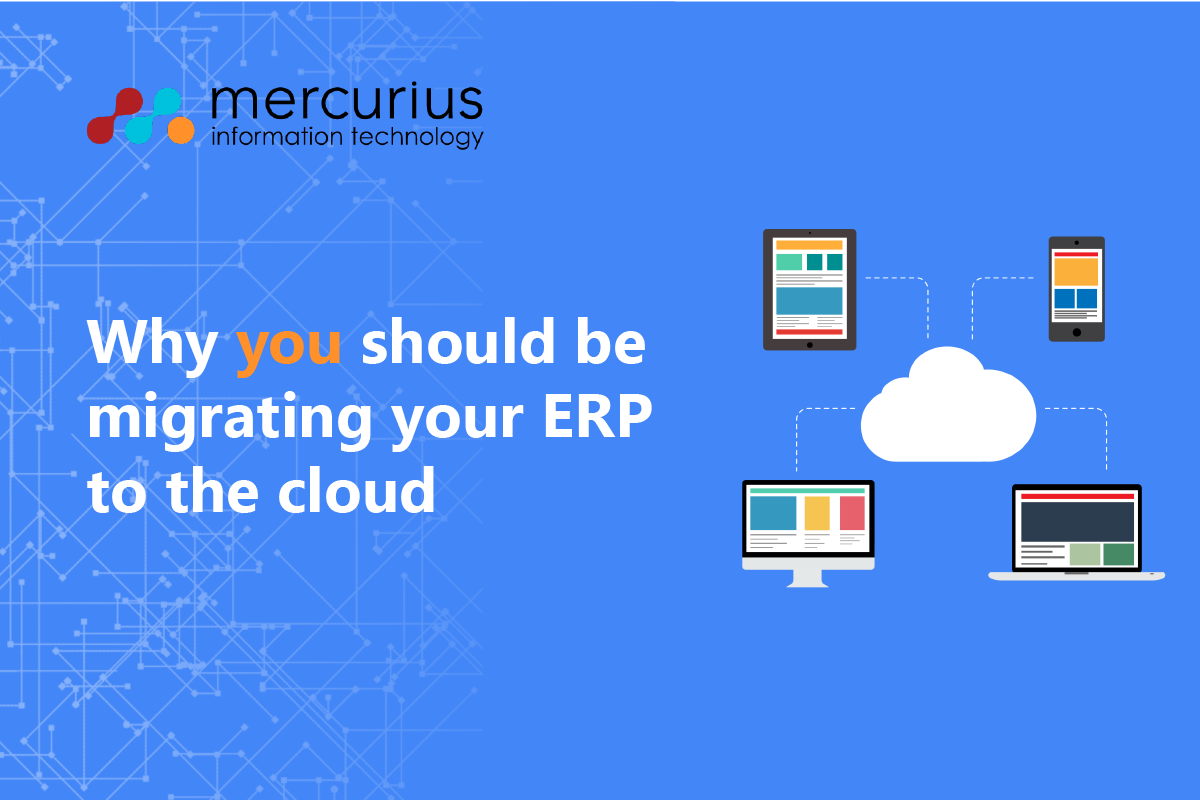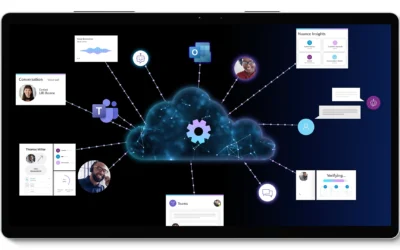What is cloud computing?
The cloud is a term referring to software and services that are deployed and accessed via the internet rather than locally on your computer. Specialist companies maintain dedicated remote servers to provide cloud computing services, which can be categorised into three main groups:Infrastructure as a Service (IaaS)
Infrastructure as a service is the fundamental cloud hosting services such as storage, networking, and virtualisation. IaaS is similar to your own on-premises server; however, it allows you to scale up and down with much more flexibility.Software as a Service (SaaS)
Software as a service involves purchasing licenses (usually per user/month) to access a software solution that is hosted and managed by a third party, essentially renting the usage of an application/service.Platform as a Service (PaaS)
Platform as a service provides capabilities to develop and customise applications on top of the deployment that you get from IaaS. You manage the applications and services that you develop whilst the cloud service provider manages the rest.
On top of the different ways you can use cloud computing, there are three common approaches that cloud providers store data and host services:
Public Cloud
The public cloud is one where your data is stored on a shared server provided by an external company, such as Microsoft Azure, Amazon Web Services, or Google Cloud Platform. Customers can flexibly subscribe to a variety of cloud-based services with no need to invest in IT hardware or maintenance.
Private Cloud
A private cloud solution hosts your data on a dedicated server, either locally or through a third-party that is only accessible to your organization. This approach offers greater security and flexibility as you are able to adapt capabilities to your unique requirements, however, this does come at a higher cost than the public cloud.
Hybrid
A hybrid cloud model combines public & private cloud together, offering a higher level of flexibility and the benefits of both. Hybrid deployments may include existing on-premises severs, as well as a public or private cloud. This allows organisations to switch back and forth and distribute how they use the services together.
Why choose cloud hosting over on-premises?
Flexibility
We have witnessed a huge need for flexible working over the past year, which has been made easier through cloud hosting. Using the cloud means you can access your data whenever and wherever you need, from any device. Working in the cloud means you also benefit from automatic updates, so you always have the latest version of whatever software or service you’re using, allowing your teams to access and utilise new features & functions. When hosting on-premises, these processes are manual and up to you to complete.
Costs
Cost is one of the biggest differences between these two models. When using a cloud service, you will typically pay on a monthly or annual basis according to requirements which are set by the hosting provider. With Azure hosting, the cost is typically around £40 following a per user/month model.
If you want to host on-premises, on the chance that your business does not already have IT infrastructure in place, you will have to purchase a server to host your systems, as well as the required air conditioning, power, and space to keep it in. This hardware can add up and become an expensive initial investment for businesses, and this is before you purchase your ERP solution! With the cloud, you are essentially paying a hosting company to rent these servers from them and have them do everything for you.
However, one thing to consider is that after you have been running your system for some years, there will eventually be a break-even point. This is where the initial expense of the hardware & server and running costs of it will become lower than the continuous monthly costs of hosting in the cloud. A typical break-even point will happen after several years but there is a high possibility that once you reach the break-even point, your servers will be becoming obsolete and new hardware will be required to keep your systems up to date with technology. This means another big investment will be required.
Security
Businesses want to know their data is secure. For some, this means they want their data stored on-premises, ensuring they know exactly where it is stored – or for businesses in certain specific industries, there is compliance that requires them to store it locally. When your deployment is in the cloud, it is still on a server, just located in a remote data centre somewhere around the world which you can access through any internet-connected device. Many businesses have concerns about the security of cloud systems, however, as cloud technology advances, there are many sophisticated security methods that encrypt your data and use firewalls to ensure maximum security. With the cloud, you also have disaster recovery built-in, ensuring you always have access to your data and nothing will be lost, regardless of whether anything happens to it. When hosting on-premises, your business is responsible for the security and any backup or recovery, if necessary.
Scalability
Using the cloud allows you to have access to all the latest technologies and updates straight away. On top of this, the cloud is scalable. You pay for the amount of space you require and if you need any more then you can do it at the click of a button for an addition to your monthly cost. With on-premises deployments, you are responsible for updating systems and this can be much more technical and complicated than using a cloud service. The hardware’s capabilities are restricted with on-premises deployments, for example, if you require additional storage or RAM, you would have to go and purchase additional hardware to accommodate this, as well as setting up and then maintaining these systems. This is a much more long and costly process than using the cloud. Another factor to consider as we mentioned earlier is that technology is advancing at a very fast rate, meaning any servers you purchase are likely to become obsolete after use for several years. This will then be another big investment for your business when upgrading to up-to-date technology.
Maintenance
When it comes to maintenance, everything is done for you when using a cloud deployment. You don’t have to worry about your systems as any maintenance to the system is included within your monthly cost to the vendor. When you host your systems locally, the responsibility is in your hands for maintaining the systems. This will mean you need someone in your organisation with IT expertise who oversees the server maintenance. More costs may be involved if you must hire someone with these skills to help maintain your servers.
Why you should be migrating to the cloud
When looking at where technology is heading, the cloud is now becoming the norm over the traditional on-premises deployment for ERP solutions. This doesn’t mean that using on-premise is obsolete, many ERP’s (including Microsoft Dynamics 365 Business Central) offer the option to be deployed on-premises. There is no one-size-fits-all approach for ERP deployments, so you will have to determine which method suits you best. However, we can advise you on the most appropriate method of deployment for your requirements. The cloud is certainly the way technology is heading so it makes sense to get your cloud transformation started as soon as possible, allowing you to reap the benefits and have the necessary resources in place required for modern working practices. To future-proof your business and support the usage of new intelligent technologies such as AI and IoT, we recommend harnessing the cloud.
We hope this blog has been useful in exploring the various benefits of moving your ERP to the cloud. If you’re looking to start your cloud journey, please get in touch so one of our expert team members can guide you through how to get started.
For further reading about cloud computing, please check out our other blogs, including ‘5 reasons you should be choosing Azure as your cloud hosting platform’
How to connect to Azure Blob Storage using AL
There have been significant improvements in the offerings of cloud technology in recent times, leading to businesses around the world looking to implement cloud-based infrastructure in their organisation. Moving to the cloud has its share of challenges when we examine...







